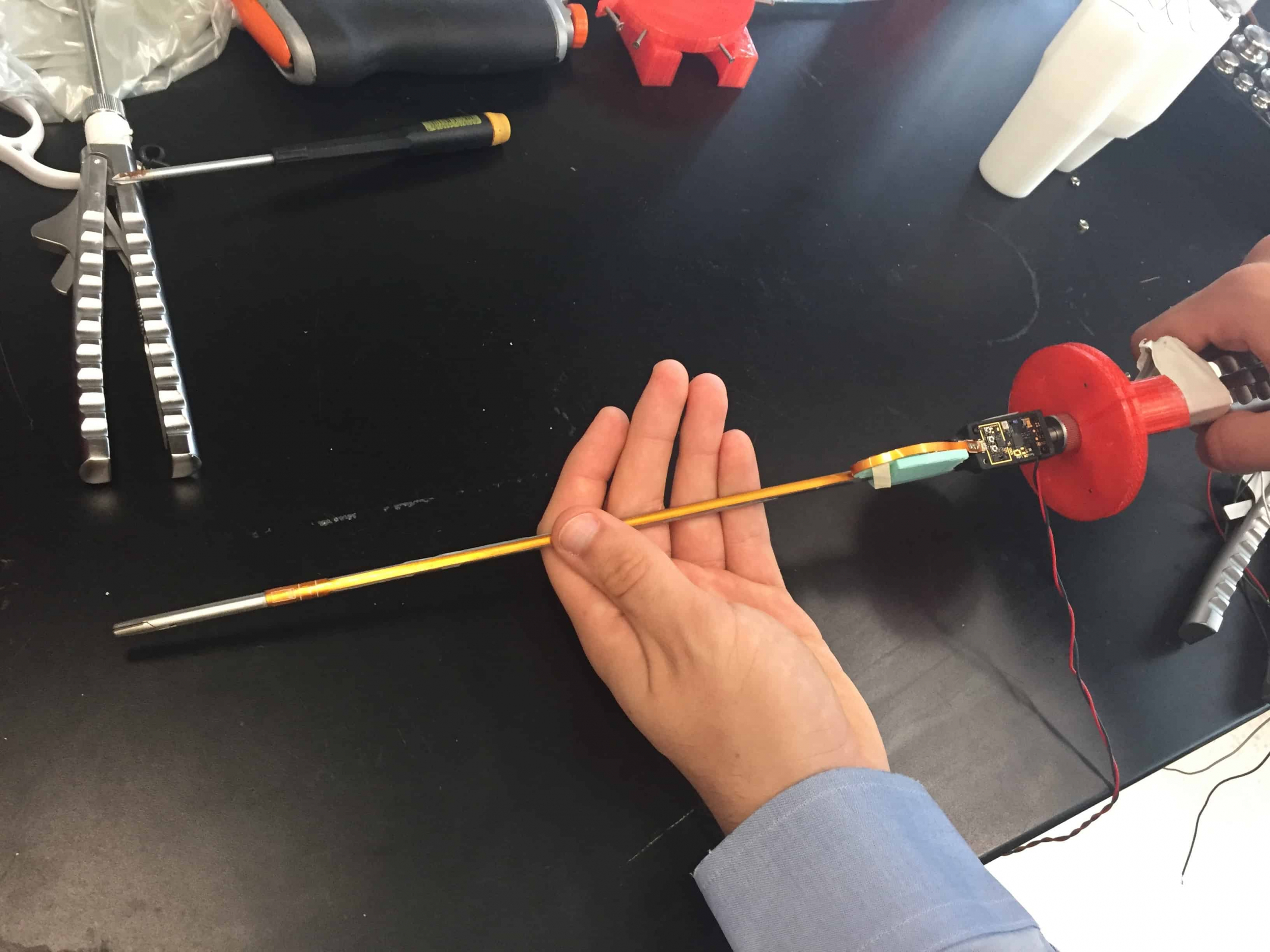Tools are said to be an extension of a surgeon’s hand. For that reason, they should be as specialized as the surgeons who use them.
Among the 14 teams who competed in the Dragons’ Den-style Demo Day hosted by The Entrepreneurship Hatchery of U of T Engineering this summer, SensOR placed as one of the top three. Their pitch, a ‘smart skin’ technology aimed at improving surgical precision, impressed the panel of judges and was awarded $10,000.
Co-founders Robert Brooks, PhD graduate in Mechanical Engineering at U of T, and Justin Wee, PhD candidate at the Institute of Biomaterials & Biomedical Engineering, set out to tackle the problems associated with minimally invasive surgery.
Contrary to traditional surgery involving open incisions and direct tissue contact, the minimally invasive technique, known as ‘endoscopic’ surgery, involves inserting longer tools into smaller incisions. For patients, this means less scarring, faster recovery, and a lower risk of bleeding. For doctors, this means working from outside the body with tools as long as a third of a metre and relying on an external monitor to display the procedure.
“We’re giving surgeons the sense of touch they had in open surgery back in minimally invasive surgery,” said Brooks. Surgeons will be able to ‘feel’ what they are doing and have much better control, ultimately reducing readmissions, scarring, and post-operative pain.
The product is a film that can be placed, like a sticker, onto any make or model of surgical tool on the market. Rather than replacing the million-dollar portfolio of tools, hospitals can simply wrap the film onto existing equipment and turn them into force sensors.
The film works by sensing the minute deformations in the tool when it pushes against body tissue. The metal deflects slightly and is detected by an array of sensors that determine exactly how and where it is deflecting. This allows the device to track not only the amount of force but the direction and type of force that it receives as well.
SensOR is one of the first to explore miniaturization in the field of force sensing. Other sensing technologies, like ultrasounds, do exist, but are often designed as bulky, external items. Only recent technology has progressed to the compactness and miniaturization seen today, allowing what should have been a large, external instrument to now be placed on the side of a medical device.
“I see a world where, first of all, everything is going to be moving toward minimally invasive surgery. We have an aging population which means we can’t do the very invasive procedures we used to,” said Brooks. “Sensing has revolutionized almost every other industry. If you think about your smartphone and the number of sensors on that, [and] the things that it’s opened up — and yet in surgery, they’re still using full mechanical tools with the exception of MRI and ultrasounds.”
The idea for this project began when Ted Gerstle, Wee’s PhD supervisor and general surgeon at The Hospital for Sick Children (SickKids), noted how residents training for endoscopic surgery were only evaluated on the speed and accuracy of their sutures, without considering the force.
After searching, and failing, to find a tool on the market, Brooks and Wee started developing their own technology. “We found [that the device] was not only useful in training or knot-tying… it was useful outside of general surgery,” said Brooks, listing internal surgery, neurosurgery, urology, cardiac and thoracic surgery, and ENT surgery among the applicable fields. “This was a fundamental problem… to all of minimally invasive surgery.”
This summer, The Hatchery moved SensOR from an idea to a product, a business plan, and a pitch. “We had the technology coming into The Hatchery, but we didn’t have a product. We didn’t have a clear message that someone with a business background — not just a medical doctor or engineer — would understand,” explained Brooks. “We’ve been able to really refine what our value is, in a way that investors and the average person can understand.”
SensOR plans to launch its product into research and training markets. While researchers using the device will help to validate it, surgeons training with this device will help to facilitate its seamless adoption into the healthcare system.


